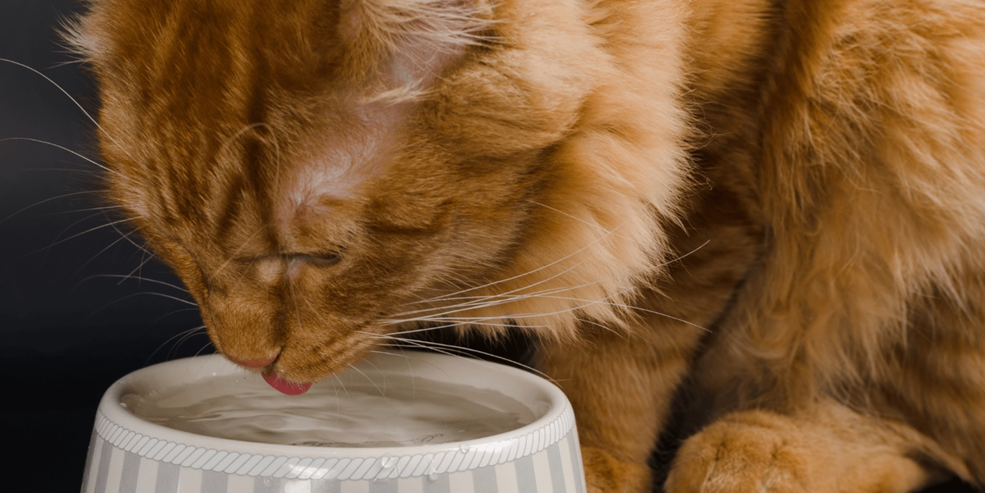Chavezlloyd Alexandria Baldago

A cat has two kidneys, one on each side of the abdomen, and they play a vital role in filtering waste from the body. Additionally, the kidneys serve to regulate the body’s balance of fluids, minerals, and electrolytes. They conserve water and protein and play an important role in maintaining blood pressure and red blood cell production by making a hormone called erythropoietin.
There are different types of kidney disease in cats and various underlying causes. These often develop into one of two categories: acute or chronic.
Acute kidney injury is when the kidneys suddenly get damaged, which can sometimes make them work less effectively. It can happen in both small animals (like pets) and humans, and it might or might not lead to reduced kidney function. The good news is that acute kidney injury can often be turned around, with about half of the affected individuals, whether they are pets or people.
The kidneys have a special ability to heal themselves if the problem that caused the injury is gone, and things that were making the injury worse stop. The chances of getting better depend on a few things, like what caused the kidney injury (if it can be fixed or not), how bad it is, if other parts of the body are affected, whether treatments like hemodialysis are available, and how well the person or pet follows the doctor’s advice.
Chronic kidney disease, or CKD, is a common issue in older cats. It makes their kidneys work less effectively. Some signs of CKD in cats are drinking more water, peeing more, eating less, losing weight, throwing up, and having a rough coat.
Unfortunately, there’s no cure for CKD, and it gets worse as time goes on. CKD results from damage to the kidneys that develops slowly over months and years and tends to cause symptoms which slowly progress. This is different from acute kidney disease, which develops if something suddenly causes a large amount of damage to the kidneys such as an infection or a poison such as antifreeze or lilies. Cats with acute kidney disease tend to develop serious symptoms very quickly
SYMPTOMS
Chronic kidney disease might not cause any symptoms in the early stages because the kidneys are still able to manage. Once the kidneys have been significantly damaged and are unable to cope, the symptoms will start to appear. Some can appear very slowly and can be hard to spot. Symptoms include:
- Drinking more
- Peeing more
- Eating less
- Weight loss
- Vomiting
- Low energy (lethargy)
- Bad breath with a “urine” smell
- Mouth ulcers
- Messy or matted coat (due to not grooming)
- Sudden blindness (due to increased blood pressure)
DIAGNOSIS
Chronic kidney disease can be diagnosed using blood and urine tests. These tests detect raised levels of certain substances that may indicate the kidneys aren’t working properly. If necessary, these test results will also help the vet grade the cat’s kidney disease, which indicates how serious it is.
Laboratory tests include:
- Blood urea nitrogen (BUN): is a by-product of protein metabolism. Higher values can often indicate kidney failure.
- Creatinine (CREA): measures how well kidneys are filtering waste from blood.
- Phosphorous: elevated phosphorous levels typically indicate kidney damage.
- Electrolytes (sodium, potassium, chloride) are often affected by the primary disease—but also by secondary factors such as vomiting and a lack of appetite.
- Calcium: elevated levels, though not as common, are often seen with kidney damage.
- Red blood cell count: if low, it may indicate kidney failure.
- White blood cell count: if high, it may indicate infection or inflammation.
- Symmetric dimethylarginine (SDMA): an additional test to help determine if kidney disease is present. It can be used for early detection of kidney disease.
- Urine specific gravity: a marker of how diluted or concentrated the urine is. Usually, the higher the number, the more concentrated the urine and the greater the ability of the kidneys to conserve water.
- Urine sediment: indicates the presence of protein, bacteria, white/red blood cells, kidney cells and casts. It is an indication of infection and/or kidney damage.
TREATMENT
It’s not possible to cure chronic kidney disease or reverse the damage that has already been done, but it is possible to slow it down and reduce the symptoms.
If your cat is poorly when they are diagnosed with chronic kidney disease, initial treatment might include:
- Fluids — cats with kidney disease tend to produce large amounts of urine and become dehydrated. Your vet may need to put your cat on a fluid drip to replace some of the fluids they’ve lost.
- Appetite and anti-sickness medication — kidney disease causes toxins to build up in the blood which results in nausea (feeling sick) and a reduced appetite. To reverse this, your vet may need to give your cat an anti-sickness medication and an appetite stimulant.
- Medication for blood pressure — kidney disease causes high blood pressure which can lead to further kidney damage and other complications such as sudden blindness. If your cat’s blood pressure is raised your vet may prescribe them with blood pressure medication.
- Antibiotics — cats with CKD are prone to urine infections (UTIs) so your vet might prescribe antibiotics if your cat has signs of an infection.



